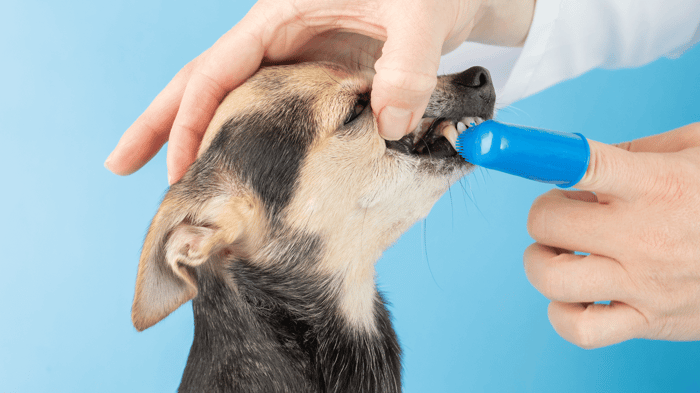Ever caught yourself worrying about your tiny pup's health?
That creeping sense of guilt, that fear of missing a crucial health sign—it’s surprisingly common among toy breed enthusiasts.
Maybe you’ve wondered, “Am I overreacting, or does my dog really need all this extra attention?”
Take heart: “Small Dog, Big Concerns” is more than a catchy phrase—these petite companions genuinely face outsized risks when it comes to Common Health Issues in Toy Breeds.
But there’s good news. This blog outlines practical prevention strategies, from daily routines to budgeting tips for vet care, so you can feel prepared instead of panicked. No complicated jargon, no intimidating protocols—just down-to-earth steps to keep your pup healthy.
Curious how their tiny anatomy plays a role in everything from dental disease to joint stress? Let’s dive in, one topic at a time
Toy Breed Anatomy & Why They’re Prone to Issues
Tiny dogs may look like pocket-sized bundles of cuteness, but their miniature frames can set them up for unique health hurdles.
There’s a lot going on: Bones so delicate that even a minor fall could mean a trip to the vet, not to mention a high-speed metabolism that burns through meals in no time. It’s like having a sports car engine inside a compact body—impressive, yet prone to wear and tear.
- Delicate Frames, Higher Risk. Small, lightweight bones mean toy breeds are more vulnerable to breaks or misalignments. A little jump off the couch can turn into a big problem if you’re not careful.
- Metabolism & High Energy. Their swift metabolism is a double-edged sword: if they skip a meal, they’re at risk of hypoglycemia. Regular feeding schedules are key—no “I’ll just feed them later” excuses.
- Common Misconceptions. People say, “They’re lapdogs—how can they get so sick?” But inactivity and constant pampering can mask real dangers. While the best small shock collar or a tiny training collar for small dogs can be useful for stopping unwanted behaviors, they still don’t address fragile anatomy at its core.
- Emotional Reassurance. It’s easy to feel guilty, wondering if you’re doing something wrong. In most cases, though, these quirks stem from nature, not nurture. When you acknowledge how biology plays a role, caring for a toy pup becomes less stressful—and a lot more intuitive.
Understanding the physical makeup of toy breeds removes some guesswork and worry.
By appreciating their delicate bones, fast-paced metabolism, and the myths that surround their care, you’ll be better prepared to spot potential problems early and keep your mini companion thriving.
Common Dental Problems: The Hidden Threat
 Picture your toy breed’s mouth as a tiny closet stuffed with too many coats. With limited room, teeth cram together, creating the perfect hiding spots for plaque and bacteria. That’s why dental disease ranks high on the list of hidden threats for little dogs—and why a few simple steps can save you from big vet bills down the road.
Picture your toy breed’s mouth as a tiny closet stuffed with too many coats. With limited room, teeth cram together, creating the perfect hiding spots for plaque and bacteria. That’s why dental disease ranks high on the list of hidden threats for little dogs—and why a few simple steps can save you from big vet bills down the road.
1. Spot the Red Flags
- Bad breath that can clear a room.
- Difficulty chewing or noticeable pain at mealtime.
- Discolored teeth or inflamed gums signaling tartar buildup.
2. Daily Brushing
- A soft-bristled brush and vet-approved toothpaste work wonders.
- Aim for gentle, quick sessions. Over time, your pup might even learn to enjoy the routine.
3. Chew Toys & Dental Treats
- Specially designed chews help scrub away plaque.
- Avoid overly hard treats that could chip a tiny tooth.
4. Regular Vet Cleanings
- Scheduling professional dental checkups means catching issues early.
- Removing stubborn tartar before it leads to infection or extractions can save money—and prevent pain.
Preventive care pays off.
Routine brushing and timely vet visits cost far less than emergency treatments or major oral surgeries. By investing in your pup’s dental health now, you’re protecting their comfort, prolonging their lifespan, and keeping your wallet happier in the long run.
Think of it as a small effort for a big reward—just like brushing your own teeth for a lifetime of better health.
Hypoglycemia & Nutrition: Keeping Energy in Balance
Skipping breakfast isn’t just an inconvenience for toy breeds—it can be a real danger. With lightning-fast metabolisms and tiny tummies, these dogs burn through glucose at a rate that leaves little room for error. One missed meal can trigger weakness, tremors, or more serious symptoms.
Why It Happens
Their petite bodies run like high-performance engines, quickly using up fuel. Without frequent recharges, blood sugar can plummet faster than expected.
Prevention Strategies
- Frequent Small Meals: Rather than two large meals a day, space out smaller portions—breakfast, lunch, dinner, and maybe an extra snack in between.
- High-Quality Food: Nutrient-dense options keep energy levels stable, helping avoid sudden crashes. Investing in premium kibble now often means fewer emergency vet visits later.
- Emergency Honey: If you spot shakiness or lethargy, a dab of honey on the gums can offer quick relief until professional care is available.
Emotional Assurance
It’s scary to see a tiny dog wobble or collapse, but hypoglycemia is very manageable with careful feeding. Think of it like a sports car: frequent pit stops keep that high-octane engine running smoothly. Whether you’re researching the best small shock collar or a tiny training collar for small dogs, remember that proper nutrition is the real game-changer for preventing sudden health scares.
Budget Consideration
Premium dog food might feel like a splurge, but it’s far cheaper than an unexpected vet bill. A solid feeding schedule, combined with quality ingredients, secures a happier, healthier life for your mini sidekick—no frantic late-night runs to the clinic required.
Patellar Luxation & Joint Health

Patellar luxation sounds like a fancy term, but it’s simply the kneecap slipping out of place—and in toy breeds, this can happen more often than you’d think. Even a minor hop or skip might signal that something’s off. It’s unnerving to see a tiny dog limping, and the fear of needing surgery can weigh heavily on the mind. But with the right precautions, you can often dodge serious complications and avoid hefty vet bills.
Here’s what you need to know:
- What It Is: The patella (kneecap) moves out of its normal groove, causing limping or that telltale skip in a pup’s stride.
- Symptoms & Severity: Mild cases show occasional discomfort, while severe instances might require surgical intervention. Early detection can make all the difference.
- Preventive Care: Focus on proper weight management, gentle exercise that's appropriate for small dogs, and investing in regular vet visits.
It might be tempting to research quick fixes for overall behavior issues. But remember, the real key to managing patellar luxation lies in balancing weight, providing gentle exercise, and getting prompt veterinary advice. Still, you can invest in the best small dog training collar to prevent unwanted behavior and to keep your pup safe.
By staying alert and proactive, you’ll keep your tiny companion strutting proudly, step after step.
Respiratory & Heart Concerns
Toy breeds often face big challenges when it comes to breathing and heart health.
Conditions like collapsed trachea—where the windpipe narrows and causes coughing or gagging—can be exacerbated by simple things like tugging on a collar or excessive barking. And then there’s the unsettling possibility of heart murmurs or even congestive heart failure, which some small dogs are genetically predisposed to develop.
Two Keys to Prevention
- Regular Cardiac Checkups: Early detection truly matters. Schedule yearly vet visits to catch heart issues before they progress.
- Healthy Lifestyle: This isn’t about boot camp workouts. Short, consistent walks and a balanced diet can do wonders. Cutting back on excessive treats helps keep weight manageable, which in turn eases stress on the heart and lungs.
Hearing a dog cough or struggle to breathe can be alarming, leaving you feeling helpless and worried.
The good news?
Small adjustments in daily habits—like opting for a harness, booking routine vet appointments, and practicing moderate exercise—can significantly improve respiratory and heart outcomes.
Think of it as a gentle but firm approach: by proactively managing these concerns, you’re giving your tiny companion the best chance to breathe easy and stay active for years to come.
Preventive Care Strategies
All the health concerns we’ve covered—dental issues, hypoglycemia, joint problems, and more—share one common solution: prevention. By spotting warning signs early and taking smart financial steps, it’s possible to spare your toy pup a lot of discomfort (and spare yourself hefty vet bills). Below are key measures to keep your small companion thriving:
Routine Vet Visits:
- Schedule annual or bi-annual checkups.
- Early detection of subtle changes often prevents serious complications.
Vaccinations & Parasite Control
- Tiny pups are more vulnerable to diseases and pests like fleas or ticks.
- Stay current on shots and parasite treatments.
Microchipping & Identification
- Not strictly a health measure, but crucial if an emergency happens away from home.
- A simple chip ensures faster reunions and easier access to medical care.
Financial Management
- Pet Insurance: Offsets large, unexpected bills.
- Emergency Fund: Even a small monthly contribution can grow into a lifesaver.
- Wellness Plans: Some vet clinics bundle routine care into budget-friendly packages.
Emotional Takeaway
- Consistency and modest monthly investments set the stage for fewer health scares and larger savings.
- The payoff isn’t just financial—it’s the peace of mind that comes from knowing you’re doing all you can.
When you weave these strategies into your normal routine, the benefits aren’t just felt in your wallet but also in your toy dog’s long-term comfort and well-being.
Your Path to a Happier, Healthier Tiny Pup

All the concerns we’ve covered—from dental issues to delicate joints—boil down to one universal truth: knowledge and prevention make all the difference. By staying informed, you can tackle problems before they start and set your miniature companion on a path of tail-wagging joy.
Consider taking these quick steps today:
- Schedule a Vet Check: Catch small problems early, before they grow into big expenses.
- Assess Their Diet: A balanced meal plan keeps blood sugar stable and weight in check.
- Look into Pet Insurance: Unforeseen emergencies can cost a fortune; insurance can soften the financial blow.
- Weigh Training Tools: Options like the best small shock collar or a tiny training collar for small dogs exist, but remember that consistency delivers the best long-term results.
Every small effort you make—whether it’s researching new food brands or planning regular vet visits—brings you closer to a future where your little dog thrives. Because with the right care, tiny pups really can lead big, healthy lives.
Small Pup, Big Answers: Your Bonus FAQ & Extra Tips
Even with the right routine, questions still pop up. Maybe you’re torn between saving money or scheduling that extra vet check. Or you’re wondering if your tiny pup’s “off” behavior really signals a problem. Below are some common FAQs and extra pointers to set your mind at ease:
1. When Should I Visit the Vet?
- Lethargy, labored breathing, or sudden weight changes are signs worth checking out.
- Trust your instincts—if your toy dog seems off, it’s better to catch potential issues early.
2. Any Budget-Friendly Solutions?
- Look for low-cost spay/neuter clinics or discount “wellness days” at local vets. Small steps can mean big savings.
- Prevention is cheaper than a last-minute emergency procedure. This includes annual vaccines, monthly flea/tick meds, and quality food to avoid bigger bills down the line.
3. What Lifestyle Adjustments Help?
- Safe Exercise: Short, gentle walks or light play sessions keep joints limber without overexertion.
- Stress Reduction: Quiet areas or crates offer sanctuary when life gets hectic.
- Mental Stimulation: Puzzle toys, short training sessions, and gentle socialization keep tiny brains active and happy.
4. Where to Find More Resources?
- Reputable pet websites, local breed clubs, or professional associations offer reliable info tailored to small dogs.
- Consider joining online forums for real-life tips from fellow toy breed enthusiasts—just verify advice with a vet if it sounds questionable.
Final Encouragement
Don’t let their size fool you—small dogs aren’t doomed to be fragile. With a few mindful steps, they can thrive, leaping off the couch (carefully!) and showing boundless energy.
The key is proactive care: staying alert to signs, investing in preventive measures, and offering safe outlets for exercise and fun.
By combining these tips with the rest of what you’ve learned, you’ll lay a solid foundation for a long, healthy life with your tiny companion—without breaking the bank or second-guessing every little hiccup along the way.

